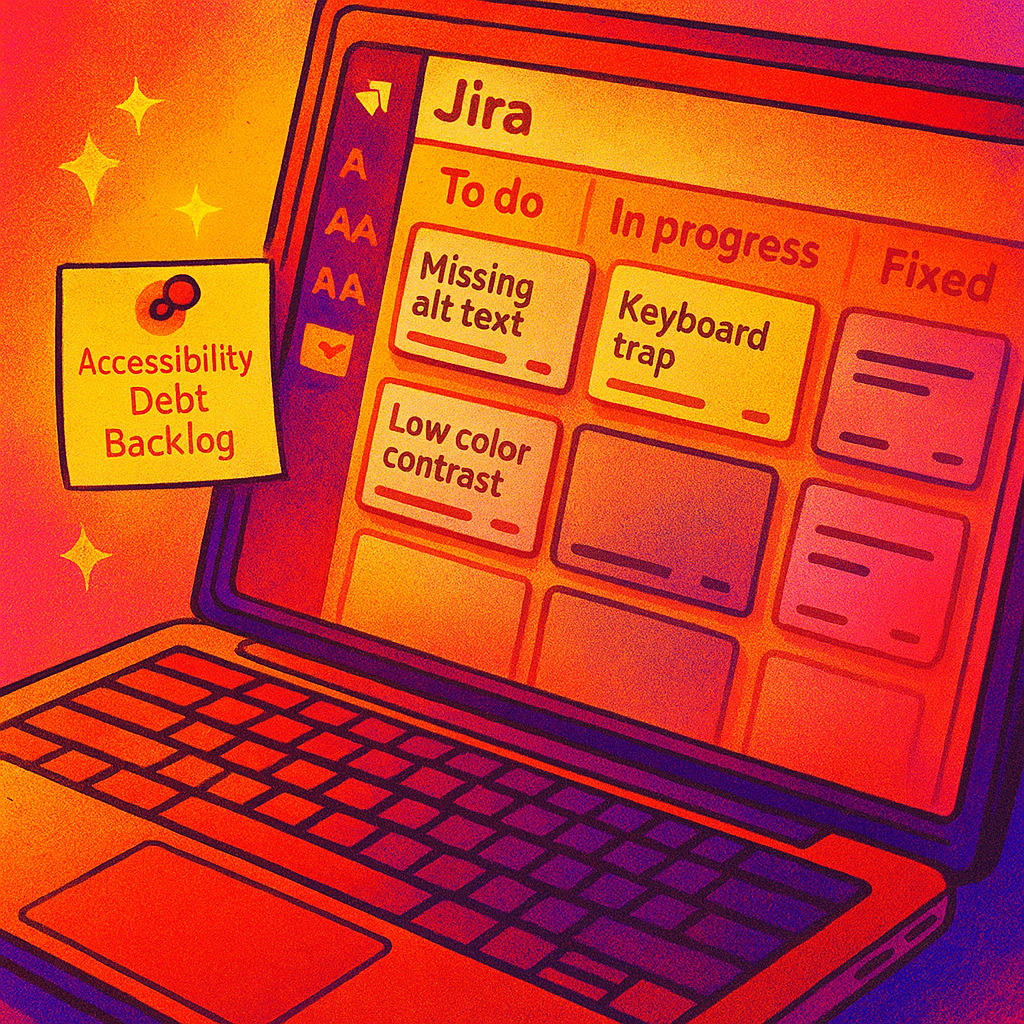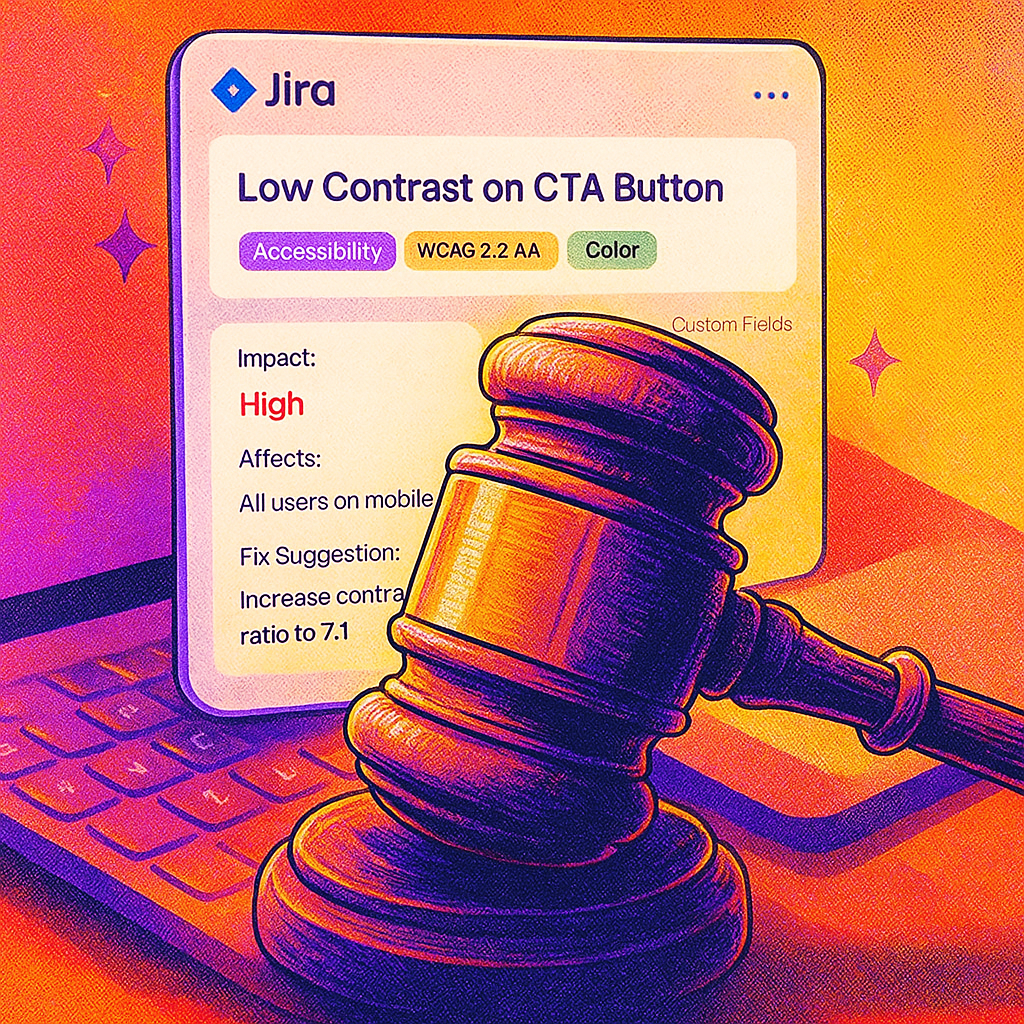Contextual Personas for Edge Devices
by Admin-checker
INDEX
The Jira backlog template provides instructions to handle accessibility debt management. The template enables you to prioritize WCAG issues while assigning tasks and tracking inclusive UX progress through a step-by-step process.
Date Jul 25, 2025
INDEX

Accessibility problems develop unnoticed until they start blocking user access. The accumulation of accessibility issues known as accessibility debt occurs when teams launch features without performing inclusive design verification.
A Jira backlog system enables teams to identify and actively manage accessibility problems before they become major issues.
This document presents a basic Jira template which helps organizations handle and decrease accessibility debt throughout their digital products.
The accumulation of unresolved issues which reduce product usability for users with disabilities constitutes accessibility debt.
These often include:
These problems create user exclusion while simultaneously raising both maintenance expenses and potential legal exposure.
Jira is already the backbone of most product teams.
By embedding accessibility directly into your backlog:
Your team should integrate accessibility features into their existing workflow instead of developing new procedures.
A good accessibility backlog template in Jira should include:
✅ Issue Types
Use a custom issue type like Accessibility Bug or tag accessibility for filtering.
Each issue should include:
✅ Labels and Components
Use consistent labels like keyboard, color, alt-text, and forms.
Group related issues under epics or components like “Login Flow” or “Header Navigation.”
✅ Custom Fields
Add fields for:

Not all accessibility issues are equal. Use a prioritization framework:
Tie each item to user stories or conversion paths to communicate business impact.
Accessibility work should be continuous—not once per year.
At Boosta, we believe every product ships with assumptions—and potential exclusions.
That’s why we use:
The method enables our team to implement inclusive design throughout all projects without generating additional obstacles.
Accessibility debt represents a product issue which extends beyond design limitations.
The Jira backlog system enables teams to monitor issues while determining priorities and deliver features that include all users.
The earlier you start, the less expensive it is to fix.
Accessibility requires continuous improvement instead of flawless execution because it focuses on both clarity and dedication to progress. This template serves as an initial tool for your team to establish more inclusive UX practices.
Teams use Zapier in boardrooms, spare rooms, and rooms where AI has ROI.